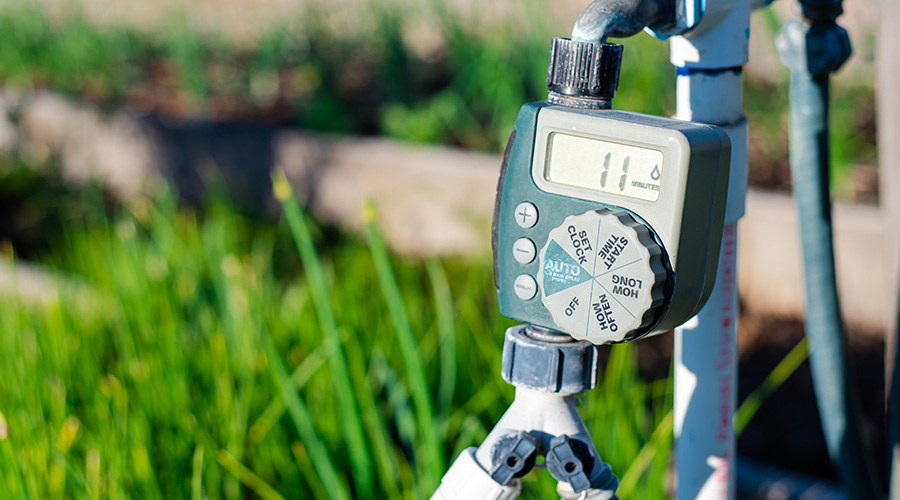Picking the Right Attachment Depends on Your Equipment
The process of selecting and purchasing new products can seem overwhelming for managers
The candidates for tasks that mower, utility vehicle or tractor attachments can handle are tasks grounds crews do not do often. Trends such as robotics, GPS and attention to efficiency will magnify their use. The biggest trend is efficiency.
“A machine that can do many things helps a crew,” Roesslein says. “The more a machine can accomplish, the more help it provides.”
Bergdoll says robotic equipment is shaking things up.
“I’m putting on my sports field hat here, where the most popular attachments we’ve seen include robotic paint machines that will paint the lines on sports fields,” he says. “You program them and let them go.”
This equipment is designed to save departments time and money, he says. Painting a field is often a two- to three-person job that can take several hours.
“With this equipment, one person can program the robot, and the robot does the rest, creating some real efficiencies,” he says.
Robotic mowers and attachments also can streamline the mowing process.
“These are technologies we will see more of,” he says. “They build in efficiencies because you don’t have to put a person on the machine. We aren't quite ready to jump into robotics yet, but I think there may be opportunities there.”
Roesslein says she sees more GPS-guided equipment at the Sports Field Management Association Conference and Exhibition.
“That includes painters and mowers and sprayers that have GPS-controlled nozzles to apply nutrition where it’s needed without waste or overlaps,” she says.
Bergdoll says he sees automation and GPS-controlled attachments as the future.
“GPS control will allow for more fine-tuned pesticide and fertilization applications,” he says.
Pick the right attachments
Given the many changes in grounds equipment and attachment, the process of selecting and purchasing new products can seem overwhelming for managers.
“Determining the right equipment boils down to honest, realistic evaluations of use and expectations,” Roesslein says. “I only have so many resources. I need to put our resources into our highest needs.”
Managers need to consider department needs before any attachment purchase and look for products that provide efficiencies. For example, a mower used for landscaping also might benefit from attachments that seed, aerate, control pests, remove leaves or debris, and manage snow and ice, and buying attachments for each task costs far less than purchasing dedicated equipment for them.
“Whenever we identify a need, we look for an attachment for it,” Bergdoll says. “We don’t want to buy another piece of dedicated equipment if we don’t have to.”
Managers also need to consider terrain and weather in considering specific attachments to support crews and budgets in caring for grounds. For example, managers in regions that receive above-average amounts of snow might consider purchasing saltboxes, snow blowers, salt spreaders and snow blades for tractors and trucks.
Conversely, in landscapes where pruning vegetation only happens a few times a year, investing in combination units with attachments, such as a pruning saw or hedge trimmer, might make sense. In such cases, one piece of equipment can prune bushes and trees of differing heights. Attachments also are available for string trimming, edging and blowing.
Bergdoll says he talks with local vendors to learn what is available and researches state contracts to see what is already on them.
“We also talk to our peers using the equipment and demo attachments before making a purchase decision,” Bergdoll says, adding that local dealers and industry associations also offer a wealth of information.
“Talking to peers really helps solve challenges with attachments,” Roesslein says. “They might have attachments I haven’t heard of before or unique approaches that get my brain thinking more creatively.”
Bergdoll says his decisions also factor in warranties, including extended warranties.
“We always compare the warranties when looking at different products,” he says. “But the most important thing is which vendor will offer the best service when needed.”
Adding attachments to larger grounds care equipment is no panacea. Scheduling gets complicated when several attachments can meet multiple groundskeeping needs, Bergdoll says.
“There are attachments that can help with sports field maintenance, forestry work, digging and grading, and they all attach to the same large equipment,” he says. “We are looking at a software system to help us schedule work orders better.”
He adds, “Right now, we plan for the week. It definitely takes a level of coordination. The days when you could walk in the door in the morning and say, ‘We are going to do this today’ are over. Now we need to do more planning.”
Ronnie Wendt is a freelance writer based in Waukesha, Wisconsin.
Related Topics:













